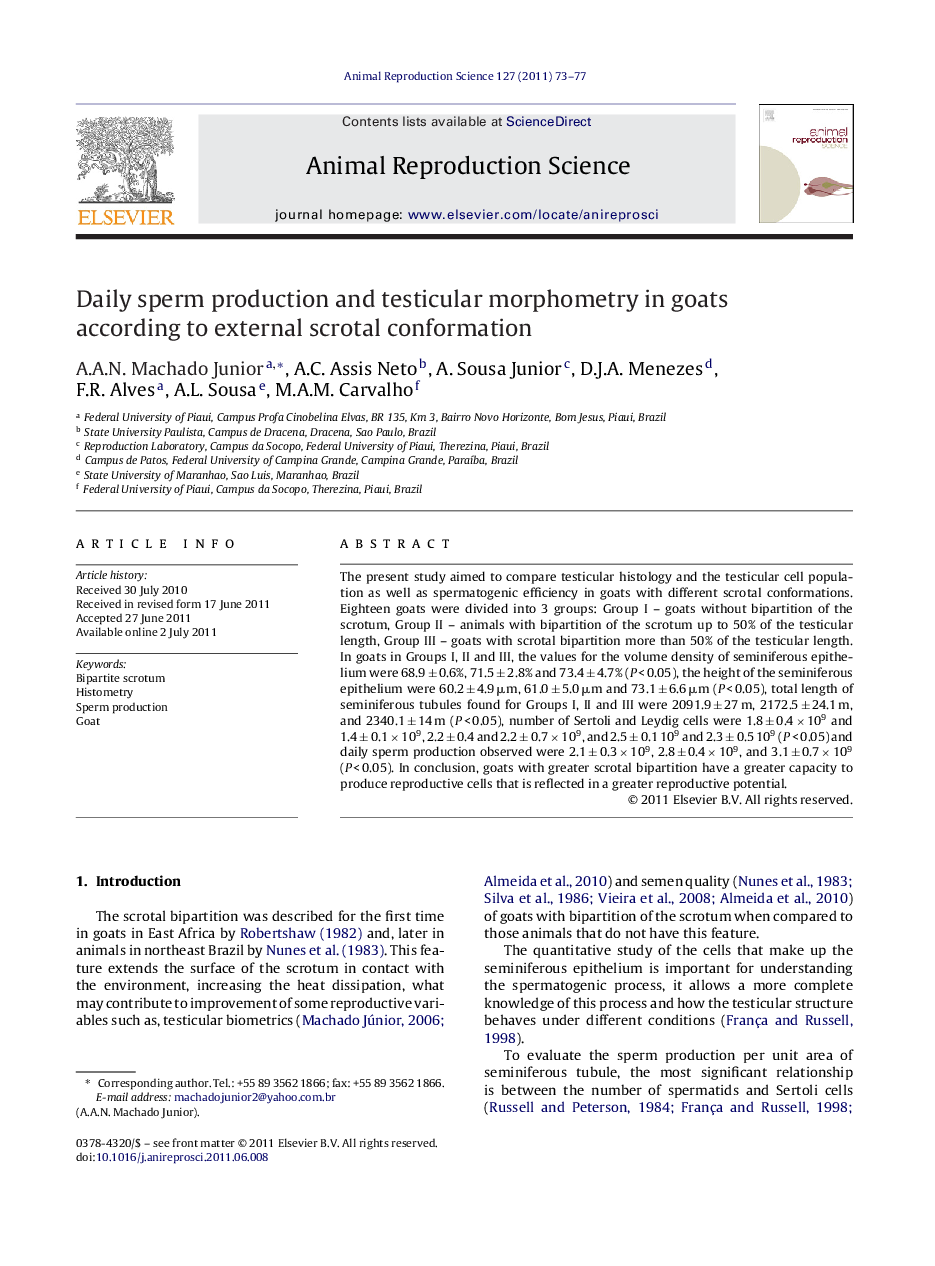| Article ID | Journal | Published Year | Pages | File Type |
|---|---|---|---|---|
| 2073560 | Animal Reproduction Science | 2011 | 5 Pages |
The present study aimed to compare testicular histology and the testicular cell population as well as spermatogenic efficiency in goats with different scrotal conformations. Eighteen goats were divided into 3 groups: Group I – goats without bipartition of the scrotum, Group II – animals with bipartition of the scrotum up to 50% of the testicular length, Group III – goats with scrotal bipartition more than 50% of the testicular length. In goats in Groups I, II and III, the values for the volume density of seminiferous epithelium were 68.9 ± 0.6%, 71.5 ± 2.8% and 73.4 ± 4.7% (P < 0.05), the height of the seminiferous epithelium were 60.2 ± 4.9 μm, 61.0 ± 5.0 μm and 73.1 ± 6.6 μm (P < 0.05), total length of seminiferous tubules found for Groups I, II and III were 2091.9 ± 27 m, 2172.5 ± 24.1 m, and 2340.1 ± 14 m (P < 0.05), number of Sertoli and Leydig cells were 1.8 ± 0.4 × 109 and 1.4 ± 0.1 × 109, 2.2 ± 0.4 and 2.2 ± 0.7 × 109, and 2.5 ± 0.1 109 and 2.3 ± 0.5 109 (P < 0.05) and daily sperm production observed were 2.1 ± 0.3 × 109, 2.8 ± 0.4 × 109, and 3.1 ± 0.7 × 109 (P < 0.05). In conclusion, goats with greater scrotal bipartition have a greater capacity to produce reproductive cells that is reflected in a greater reproductive potential.
